NORTHERN IRELAND
History

History

Cities in NORTHERN IRELAND
| Belfast |
Popular destinations UNITED KINGDOM
| England | Northern ireland | Scotland |
| Wales |
History
Antiquity
Small groups of hunters settled in Ireland about 6,000 BC. on the north and east coast. Flint weapons and tools have been found of these people. In the late Stone Age (from 3000 BC) other peoples invaded Ireland from the Mediterranean and the Atlantic coast. They practiced agriculture, kept animals and erected many megalithic tombs.
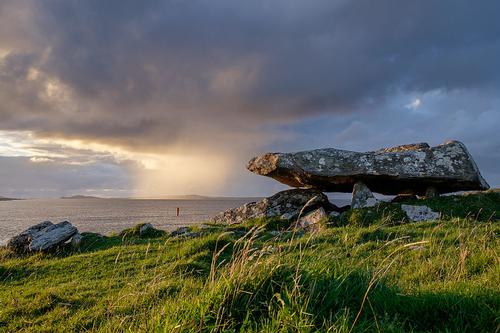 Megalithic Tomb IrelandPhoto: Ronan Delaney CC 4.0 International no changes made
Megalithic Tomb IrelandPhoto: Ronan Delaney CC 4.0 International no changes made
The Bronze Age lasted from about 2000 BC. to 500 BC. Many weapons, tools and (including gold) jewelery from that period can still be seen in the National Museum in Dublin. From the fifth century BC. The Celts from Spain, France and southern Germany invaded Ireland in waves. They had iron weapons and, among other things, had little trouble submitting to the native population. The Celts spoke an Indo-European language, which would form the basis for Irish or Gaelic. The Celts lived according to the clan system, about 150 small kingdoms (tuatha) headed by a supreme king (Ard Rí). The Celtic people were divided into three classes, the free (warriors), the unfree (including druids, musicians and poets) and slaves. Celtic society had no further writing, but it did have a highly regarded storytelling culture. The Romans left the Celts alone, which allowed the Celtic culture to flourish. The fall of the Roman Empire, from the third AD onwards, led to a period also known as the “Golden Age”.
Middle Ages
 St Patrick IrelandPhoto: Andy Coan CC 2.0 Generic no changes made
St Patrick IrelandPhoto: Andy Coan CC 2.0 Generic no changes made
St. Patrick came to Ireland in 432 and converted all of Ireland within a few decades. St. Patrick and his followers founded churches and monasteries everywhere and also introduced the Latin alphabet. Due to the problems in mainland Europe (including the migration of people) it was relatively quiet in Ireland. Many scholars and monastic orders fled to Ireland, so that arts and science flourished. The art of writing and illustrating reached a very high level; the Book of Kells is one of the most beautifully illustrated manuscripts from that period.
The Golden Age came to an end with the Viking raids. The monasteries in particular were looted. Along the coast, trading posts were established by the Vikings from which later cities such as Dublin, Waterford and Cork emerged. They also introduced the money economy. In 1014, the Vikings were defeated at Clontarf. After this, the country fragmented and fell prey to mutual disputes.
One of those deposed kings enlisted the help of Anglo-Norman troops (England and Normandy were linked by a personal union at the time), which was the beginning of nearly 800-year rule by the English. The Irish obviously resisted the occupiers fiercely, and the Anglo-Normans failed to really subdue the Irish. On the contrary, the Anglo-Normans were more or less absorbed in the Irish people, using names and language.
Ireland remains Catholic
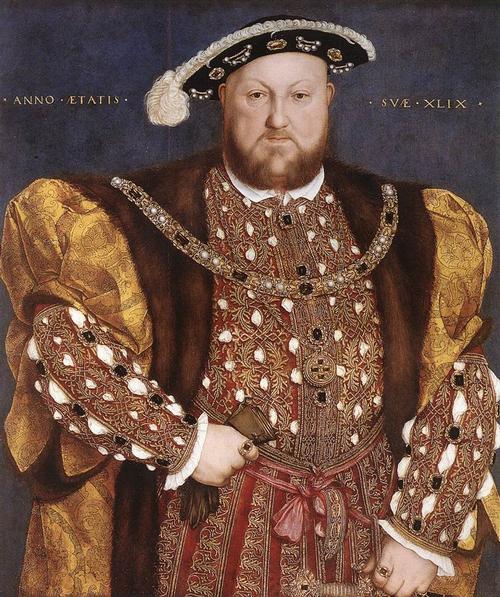 Henry VIII Northern IrelandPhoto: Public domain
Henry VIII Northern IrelandPhoto: Public domain
In the fifteenth century, large parts of Ireland were therefore dominated by the FitzGeralds from Kildare, an Anglo-Norman family. A major change began with the departure of Henry VIII from the Catholic Church. Hendrik put himself at the head of his own Anglican church, which of course he also wanted to import into Ireland. However, the Irish refused and remained Catholic, even when Henry closed monasteries and forbade the priesthood. After the lost uprising of 1534, Ireland was divided into 32 counties in 1540.
Divided Northern Ireland
In the course of the sixteenth century, the Tudor princes Henry VIII, Edward VI, Mary I and Elisabeth I subjugated all of Ireland and the Celtic order slowly went under. In 1558, Elisabeth I forbade the celebration of Holy Mass, after which the Catholic Church went underground.
Ulster, Northern Ireland, resisted most of the policies of Elisabeth I. A three-year uprising followed, but was lost. As a result, many Irish leaders fled to mainland Europe, the “Flight of the Earls”. At that time Ireland was completely dominated by the English. The six northern counties were taken over by Scottish and English Protestants, much to the anger of the Catholic Irish. Here, in fact, the dichotomy of Northern Ireland began, which has caused many problems to this day.
Irish rebellions
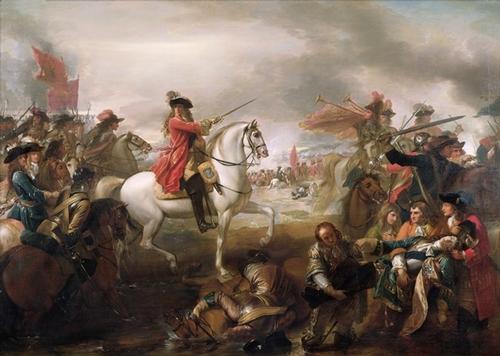 Battle of the Boyne, Northern IrelandPhoto: Public domain
Battle of the Boyne, Northern IrelandPhoto: Public domain
In 1641, the Irish revolted against the English who were brutally crushed by Oliver Cromwell, who came to power in England after a civil war. Tens of thousands of Irish people died. In 1660, the monarchy recovered in England and the Irish regained hope of reparation. However, James II was succeeded by the Protestant Willem III (van Oranje) who restored Protestant superiority after the Battle of the Boyne in 1690. The small group of Protestants did not feel safe from the large mass of Catholics who lived in extreme poverty. The Penal Laws were introduced between 1695 and 1705, which deprived Catholic Irish of almost all their rights. In response, many Irish immigrated to the United States.
The Irish who stayed tried to preserve Irish culture underground. In 1778, the Penal Laws were somewhat softened, partly because England waged several wars and was afraid of a major uprising in Ireland. In fact, a parliament, although only consisting of Protestants, was installed. The ideals of the French Revolution in 1789 led to the creation of the United Irishmen by Theobald Wolfe Tone.
Irish self-government abolished
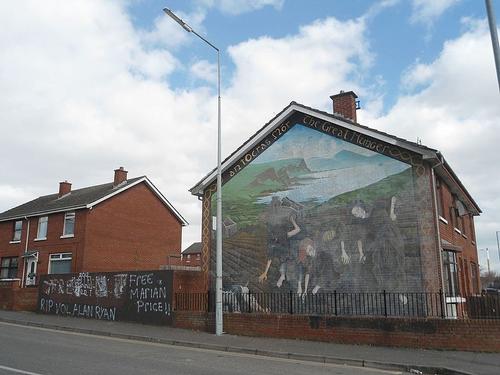 Irish Potato Famine mural, Belfast Northern IrelandPhoto: Keith Ruffles CC 3.0 Unported no changes made
Irish Potato Famine mural, Belfast Northern IrelandPhoto: Keith Ruffles CC 3.0 Unported no changes made
They strived for an independent Irish Republic with equal rights for Protestants and Catholics. In 1794 such organizations were banned by the English. In the north, on the other hand, the Protestants wanted nothing more than to stay with England. The Orange Order and the English that still exist today suppressed an attempt at Revolution in 1798 by Tone.
The Act of Union of 1800 reversed limited Irish self-government and incorporated Ireland as a whole into the United Kingdom. This would last until 1921. In the 19th century, the Catholic Church recovered somewhat, culminating in the taking of a seat in the English Parliament by Catholic David O'Connell.
Between 1845 and 1847, Ireland suffered hunger from three successive failed potato harvests (Great Famine). One and a half million Irish died of starvation or epidemics. One and a half million Irish people emigrated, particularly to the United States and Australia. The British government offered hardly any help, on the contrary: exports of grain, meat and dairy products to England continued.
In 1872, the Irish tenants gained slightly more rights by the introduction of secret elections. However, they did not think that was enough and founded the Land League. Action was taken everywhere and this eventually led to the abolition of the lease system. Attempts to gain self-government, called Home Rule, have failed for the time being.
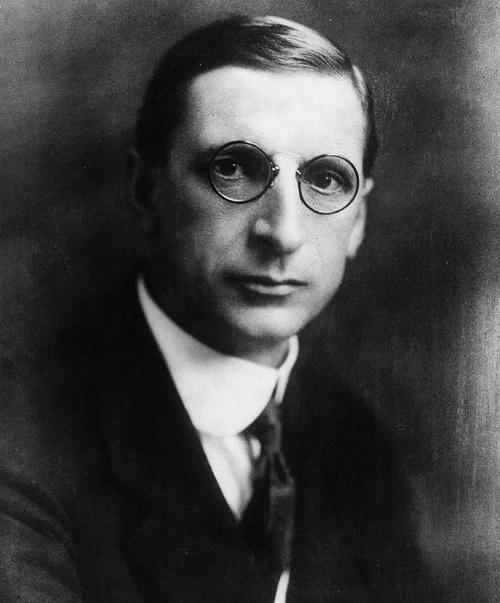 Éamon de ValeraPhoto: Public domain
Éamon de ValeraPhoto: Public domain
Early 20th century
In the early 20th century, various political (militant) movements such as Sinn Féin (We Only), the Irish Socialist Republican Party and the Irish Citizen Army were established, all of which showed strong nationalist traits. In 1912, the House of Commons adopted the Home Rule Bill. However, due to a veto from the House of Lords, this was canceled. The Northern Irish Orange men looked with dismay at Irish nationalism and even founded their own army, the Ulster Volunteers.
Civil war seemed to be breaking out when the nationalists (Irish Republican Brotherhood) also set up their own army, the Irish Volunteers. However, the outbreak of World War I changed everything. Hundreds of thousands of Irish fought on the Allied side and thought they could claim the right to self-government as a kind of reward.
However, the Irish Republican Brotherhood saw an opportunity to establish self-government precisely in the British weakness. All this led to an uprising in Dublin in 1916. Due to poor organization, the Easter uprising quickly came to an end. The English sent a small army and executed 14 rebel leaders.
Éamon de Valera, Sinn Féin foreman, survived because he had an American passport. The 1917 parliamentary elections were won by Sinn Féin. However, the elected representatives did not take their seat in Westminster, but met in Dublin. Under the leadership of De Valera, the declaration of independence of the Easter uprising was signed.
Northern Ireland remains connected to the United Kingdom
The British sent a paramilitary police force to Ireland and fought a bitter battle with the Irish Republican Army (IRA), which was established in 1919. In July 1919, an armistice was concluded. After negotiations, Ireland gained free state status in the British Commonwealth in 1921. They were even allowed to conduct their own foreign policy.
The land was divided in two; the six northern counties (Ulster) remained connected to the United Kingdom, the remaining 26 counties forming the Irish Free State. The treaty did cause a split within the IRA. The Republicans of Irregulars led by De Valera did not agree. It led to a bloody civil war won in 1923 by the supporters of the treaty.
In 1926 De Valera founded a new party, the Fianna Faíl. This party won the 1932 elections and De Valera became prime minister.
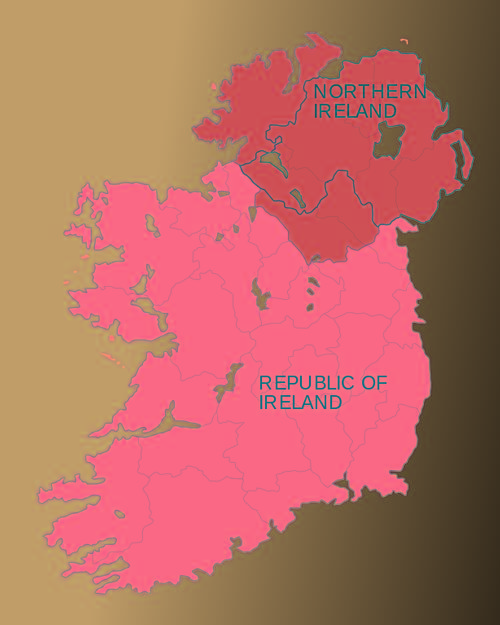 Seperation Northern-Ireland and IrelandPhoto: Public domain
Seperation Northern-Ireland and IrelandPhoto: Public domain
Ireland's independent republic
The United Kingdom was in a constitutional crisis in 1934 after Edward VIII resigned. De Valera and parliament passed a new law that ousted the British king as head of state.
At that time, Ireland became a sovereign state within the Commonwealth. Douglas Hyde was elected the first president in 1938. Ireland remained officially neutral during the Second World War, although De Valera and the IRA could not be denied any pro-German (and therefore anti-English) sentiments. In 1948, the government of De Valera was relieved by a coalition of which Fine Gael was the largest party.
This government declared Ireland a republic in 1949, leaving the Commonwealth of Nations. With Prime Minister Seán Lemass taking office, things were going in the right direction economically. Foreign companies were brought in through favorable location regulations and low tax rates. Agriculture benefited in particular from its accession to the European Union in 1973. Due to the crisis in the 1980s, unemployment rose rapidly (up to 19% of the labor force), and 300,000 people left the country. The 1990 parliamentary election was surprisingly won by Mary Robinson. September 1997, Mary Robinson stepped down as president and was succeeded by Mary McAleese.
Northern Ireland issue
In the period from the founding of Northern Ireland to the 1960s, there were sporadic serious disturbances between Catholics and Protestant administrators. In the 1960s, a movement gradually emerged among Catholics claiming equal rights. Their actions were seen as very threatening by the Protestant majority, and they responded with a lot of power.
As a result, tensions in Northern Ireland quickly escalated and the first disturbances started in 1968. In 1969 it split between the "traditionals" or "red" IRA members and the "provisionals" or "green" IRA members. The former used traditional methods, while the second employed the urban guerrilla system. In England, the idea grew that the manner in which the Protestant government used its power exacerbated rather than solved the problem. In order to prevent the situation from getting completely out of hand, London therefore ultimately opted for the abolition of self-government. British forces were sent to Northern Ireland to restore order. They were received with cheers by the majority of the Catholics. However, the more extreme parts of the Catholics saw occupiers in the British troops. The troops therefore became legitimate targets for these extremists.
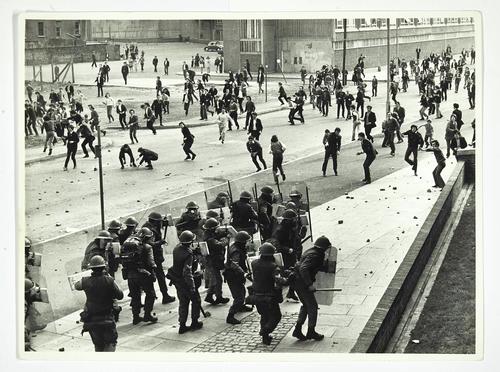 Northern Ireland Conflict Londonderry 1971Photo: Public domain
Northern Ireland Conflict Londonderry 1971Photo: Public domain
It soon turned out to be extremely difficult for British troops to distinguish between ordinary Catholics and extremists from the IRA. This was shown in a most painful way by the way the army reacted during a peaceful demonstration in Londonderry, referred to by the nationalists as Derry. What exactly happened that day is still the subject of investigation by a committee. However, it is clear that on that particular Sunday in 1972, "Bloody Sunday", 13 Catholics were shot and killed by British soldiers. That event was grist to the mill of the extremists.
In the Catholic community, supporters of the moderate Social Democratic and Labor Party began to decline gradually and supporters of Iinn-affiliated party Sinn Féin grew rapidly. On the Protestant side, supporters of the traditional Unionist party declined. The radical group around militant pastor Ian Paisley, on the other hand, saw its supporters grow rapidly. Since placing Northern Ireland under direct government of the British in 1972, the IRA has also focused its terrorist activities on objects in Britain and on the European continent. In February 1972, the IRA conducted an attack on Britain outside the island of Ireland for the first time. A direct attack on Margaret Thatcher's British government took place on October 12, 1984. A bomb at the Grand Hotel in Brighton, where the Conservative Party held its party congress, killed five people. On 7 February 1991, a mortar attacked 10 Downing Street, the official residence of the British Prime Minister. Two major bomb explosions in London City, in April 1992 and again a year later, were intended to hit Britain's financial heart. The IRA also committed an attack in the Netherlands (Roermond, 1990).
The series of attacks did not come to an end until September 1994 when the IRA declared a truce. Negotiations were attempted to find a peaceful solution to the conflict, which, however, ended up with the unwillingness or powerlessness of all parties involved. It was therefore not surprising that the IRA resumed its terrorist activities in 1996. In July 1997, the IRA announced another truce and Sinn Féin, the political arm of the IRA, was able to participate in new peace negotiations. It was the first time in 25 years that the parties officially talk to each other.
In difficult negotiations, in which the United States also played a significant role, an agreement was reached in 1998 between Ireland, Northern Ireland and Great Britain, the Good Friday Agreement. One of the provisions was that the claims in the territory of Northern Ireland would be removed from the Constitution of the Republic of Ireland.
In a referendum, 71% of Northern Ireland agreed to the Good Friday Agreement. In June of that year, Assembly elections were held, won by David Trimble's Ulster Unionist Party (UUP) and John Hume's SDLP. Both men were awarded the Nobel Peace Prize at the end of that year. Disgruntled IRA members, under the name of Real IRA, tried to frustrate the peace process with a terrible bomb attack in Omagh, but the peace tide was irreversible.
Agreement was reached in 1999 on government participation by Sinn Féin and on disarmament by the IRA. This disarmament was very difficult in 2000 and 2001 and even led to the British government depriving the executive of all its powers.
Only on October 24, 2001, under pressure from Sin Féin, the IRA actually started handing in its weapons. In response, the British Army began decommissioning its military installations.
In October 2002, the Northern Ireland Government and the Regional Parliament of Northern Ireland were put on hold after allegations that the IRA had infiltrated the UK Department of Northern Ireland through Sinn Féin.
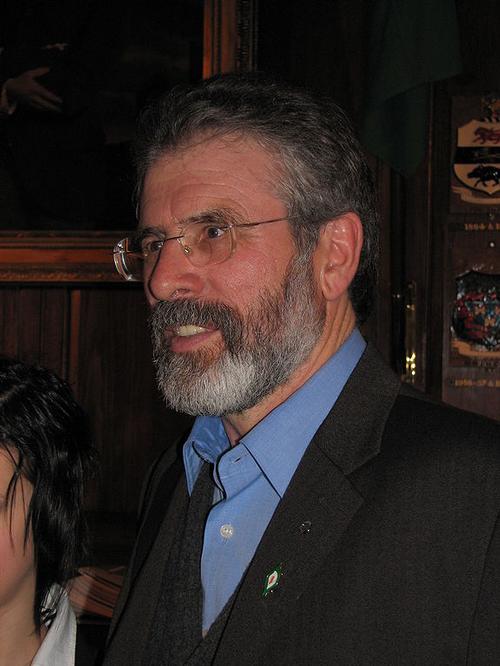 Gerry Adams leader of Sinn Féin, Northern IrelandPhoto: Public domain
Gerry Adams leader of Sinn Féin, Northern IrelandPhoto: Public domain
On April 6, 2005, the leader of Sinn Féin, Gerry Adams, called on the IRA to end the armed struggle. It was the first time that Adams had openly called on the IRA to lay down arms. Adams called on the IRA to pursue a political solution to end British government.
In May 2005, David Trimble stepped down as leader of the UUP after losing his seat in the UK Parliament in elections.
On July 28, 2005, the IRA instructed its members to put an end to the armed struggle. In a historic statement, the organization said that the armed struggle had been abandoned and that it wanted to end all criminal activities of IRA members. In addition, it was added that the IRA wanted to achieve its objectives only through political avenues.
In April 2007, thanks to the interference of the British government, an agreement was reached on a new coalition between Protestant leader Ian Paisley and Catholic leader Gerry Adams. This coalition took effect on May 8, 2007 when the new coalition was sworn in. Northern Ireland has regained self-government since then, having been directly managed by the UK central government since 2002. Ian Paisley became the new Prime Minister, Catholic Martin McGuinness the new Deputy Prime Minister. Remarkable, because until recently the two were fierce opponents of each other.
On July 31, 2007 at midnight, British troops left Northern Ireland territory after a 38-year occupation. On August 1, the police took over the duties of the army.
Orange marches of Protestants in Northern Ireland led to riots in several places in June 2009. About ten police officers were injured. According to a spokesman for the political party Sinn Fein, the political branch of the terrorist movement IRA in the past, splinter groups such as Real IRA are behind the riots. It was also restless in 2013 during the orange marches.
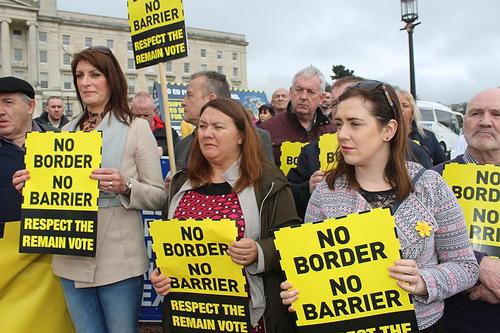 Sinn Féin anti-hard border protest at Stormont, Northern IrelandPhoto: Sinn Féin CC 2.0 Generic no changes made
Sinn Féin anti-hard border protest at Stormont, Northern IrelandPhoto: Sinn Féin CC 2.0 Generic no changes made
In 2017, British Prime Minister Theresa May can only stay on thanks to the support of Northern Irish Unionists. In 2020 the border between Northern Ireland and Ireland is yet again an issue as it is now a hard external border between the UK and the EU.
See also the History of England on TheWorldOfInfo.
Sources
Cahill, M. J. / Northern Ireland
Chelsea House Publishers
Day, C. / North of Ireland
Cadogan
Wikipedia
CIA - World Factbook
BBC - Country Profiles
Last updated June 2025Copyright: Team The World of Info